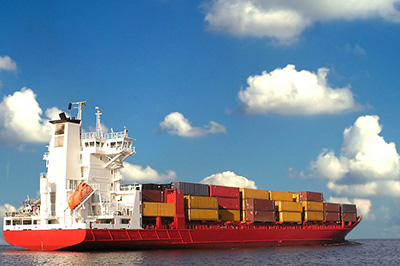Pacific Rim Shipping Report: A zero-emission future

The U.S. West Coast was rife with controversy in 2017, particularly over the threats posed by environmental advocates and community activists targeting the nation’s largest ocean cargo gateway with legal challenges to its massive transportation network.
Amid the rancor, however, cooler heads prevailed as the governing boards of the ports of Los Angeles and Long Beach unanimously approved the 2017 Clean Air Action Plan (CAAP) Update late last year. Admittedly, this came despite concerns voiced by logistics managers that the implementation may be “unrealistic.”
But after evaluating the document recently, Logistics Management believes that it provides high-level guidance for accelerating progress toward a zero-emission future while protecting and strengthening the ports’ competitive position.
The action sets in motion the process for developing and refining specific programs.
The strategies include:
- Identifying clean engine milestones for new trucks entering the port drayage registries and creating a rate structure and incentives that encourage faster turnover to near-zero and zero-emission trucks, with the goal of transitioning to a zero-emission, on-road drayage fleet by 2035.
- Developing a universal truck reservation system, staging yards, intelligent transportation systems and other efficiency programs to reduce emissions while improving the flow of cargo.
- Beginning in 2020, the plan calls for terminal operators to deploy zero-emission equipment, if feasible, or the cleanest equipment available when procuring new cargo-handling equipment, with the goal of transitioning all terminal equipment to zero emissions by 2030.
- Developing infrastructure plans to support terminal equipment electrification, alternative fuels and other energy resource goals.
- Expanding use of on-dock rail, with the long-term goal of moving 50% of all cargo leaving the ports by rail.
As the detailed implementation programs are developed, they will be brought to each port’s harbor commission for approval. The Pacific Merchant Shipping Association (PMSA) was especially encouraged by the findings contained in this document.
John McLaurin, president of the PMSA, has taken a measured, conciliatory position on the updated plan.
“Progress was made in some key areas, specifically if the ports were to mandate a technology that has not yet been developed, tested or made commercially available,” he says.
Logistics managers, meanwhile, have expressed their concern about the CAAP’s $14 billion cost and its potential negative impact on port competitiveness as well as the one-in-nine jobs in the Southern California region that are reliant on the ports. PMSA is understandably circumspect.
“As the CAAP is implemented, it will take open, honest and collaborative dialogue by all parties to address the feasibility of zero-emission cargo-handling equipment and to examine the ports ability to compete with other North American trade gateways,” says McLaurin.
However, the PMSA observes: “Who’s against clean air?”
Building on the dramatic clean air gains achieved since the ports adopted the CAAP in 2006, the 2017 CAAP appears to be a comprehensive plan for pursuing the ultimate goal of eliminating all harmful air emissions from port-related sources: ships, trucks, cargo handling equipment, locomotives and harbor craft.
The document identifies four categories of coordinated strategies:
- clean vehicles, equipment technology and fuels;
- infrastructure investment and planning;
- operational efficiency throughout the supply chain; and
- energy resource planning.
In addition to incorporating regional, state and federal standards and regulations, the 2017 CAAP integrates aggressive joint zero-emission initiatives announced by the mayors of Los Angeles and Long Beach.
At that time, we heard a fair measure of concern about the viability of CAAP, and “worst case scenarios” for shippers reliant on the nation’s biggest port complex—and for good reason. The estimated cost of implementing the 2017 CAAP ranges from $7 billion to $14 billion.
Yet, that kind of talk has toned down. Given the pioneering nature of the ports’ objectives, the update relies on a framework to assess the feasibility of new technologies, to determine workability and affordability, and to demonstrate the adequacy of supporting infrastructure.
The document also reaffirms the ports’ commitment to nurturing a vibrant workforce as it transitions to zero-emission technologies for the goods movement industry. Given the ongoing signals of good faith expressed by all stakeholders, we may all be able to breathe a little easier.

Article Topics
Columns News & Resources
Latest in Materials Handling
Manhattan Associates selects TeamViewer as partner for warehouse vision picking ASME Foundation wins grant for technical workforce development The (Not So) Secret Weapons: How Key Cabinets and Asset Management Lockers Are Changing Supply Chain Operations MODEX C-Suite Interview with Harold Vanasse: The perfect blend of automation and sustainability Consultant and industry leader John M. Hill passes on at age 86 Registration open for Pack Expo International 2024 Walmart chooses Swisslog AS/RS and software for third milk processing facility More Materials HandlingAbout the Author
Subscribe to Materials Handling Magazine

Find out what the world's most innovative companies are doing to improve productivity in their plants and distribution centers.
Start your FREE subscription today.
April 2024 Modern Materials Handling

Latest Resources










